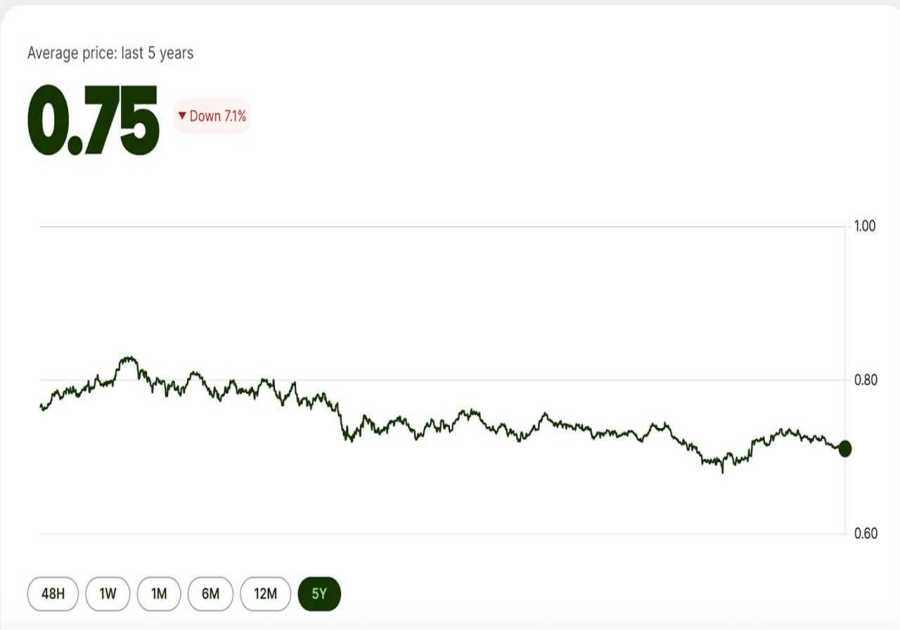Essential Steps to Prepare for Your Small Business Audit
How to prepare for a small business financial audit starts with systematic organization of financial records, understanding audit scope and requirements, implementing strong internal controls, and maintaining clear communication with auditors throughout the process. Success depends on advance preparation, proper documentation, and proactive compliance with accounting standards to ensure a smooth audit experience that strengthens business operations rather than disrupts them.
As the Founder and CEO of Complete Controller, I’ve guided hundreds of small businesses through their first financial audits over the past two decades. What I’ve learned is that the businesses that thrive during audits are those that treat preparation not as a burden, but as an opportunity to strengthen their financial foundation. With only 29-30% of the over 400 million small and medium businesses worldwide performing significant compliance assessments annually, despite non-compliance potentially costing up to $14.9 million while compliance audits cost around $12.5 million, the smart money is on being prepared.
What is a small business financial audit and how do you get it right?
- A small business financial audit is a systematic examination of financial records, internal controls, and accounting practices conducted by independent auditors to verify accuracy and compliance
- Financial audits review income statements, balance sheets, cash flows, and supporting documentation to ensure fair representation of business financial position
- Tax audits focus specifically on tax filings and compliance with federal, state, and local tax regulations
- Compliance audits examine adherence to industry-specific regulatory requirements like workplace safety or data privacy
- Success requires year-round preparation, not last-minute scrambling when audit notification arrives
Understanding Different Types of Small Business Audits
The foundation of effective audit preparation begins with understanding exactly what type of audit your business will undergo. Many small business owners make the critical error of assuming all audits are the same, leading to inadequate preparation and unnecessary stress during the process. The reality is that different audit types require distinct preparation strategies, documentation requirements, and focus areas that can dramatically impact your experience and outcomes.
Financial audits represent the most comprehensive examination of your business records, involving an independent review of financial statements to verify accuracy and compliance with accounting standards. These audits typically focus on income statements, balance sheets, cash flow statements, and supporting documentation to ensure that financial reports present a fair and accurate picture of your business’s financial position. Auditors conducting financial audits will examine transaction details, assess internal controls, and verify that accounting practices align with Generally Accepted Accounting Principles (GAAP) or other applicable standards. According to recent data, audit fees for small businesses typically range from $12,000 to $50,000, with Big Four firms charging $20,000 to $50,000 and smaller CPA firms charging $12,000 to $15,000.
Tax audits present a different challenge entirely, focusing specifically on your business’s tax filings and compliance with federal, state, and local tax regulations. The Internal Revenue Service conducts these audits to verify that reported income, deductions, and credits are accurate and properly supported by documentation. Tax audits often target specific areas such as business expense deductions, employee classification, or revenue reporting discrepancies that statistical analysis has flagged as unusual compared to similar businesses. Interestingly, IRS audit rates have dramatically declined over the past decade—the overall audit rate dropped from 0.9% of tax returns in 2011 to just 0.3% in 2018, with only 520,000 out of 153.9 million individual tax returns being audited.
Internal audit preparation requirements
Internal audits, while conducted by your own organization or contracted specialists, require equally thorough preparation despite their internal nature. These audits typically focus on operational efficiency, risk management, and compliance with internal policies and procedures rather than external regulatory requirements. The preparation process involves gathering documentation related to internal controls, operational procedures, and performance metrics that demonstrate how well your business adheres to established policies and achieves operational objectives.
Compliance audits represent another specialized category that examines whether your business meets specific regulatory requirements within your industry. These audits may focus on areas such as workplace safety, environmental regulations, data privacy requirements, or industry-specific licensing and certification standards. The preparation requirements vary significantly based on your industry and the specific regulations governing your business operations, making it essential to understand which compliance frameworks apply to your organization. A comprehensive financial audit checklist from the IRS can help you understand these varying requirements.
Statutory vs voluntary audit considerations
Understanding whether your audit is mandatory or voluntary also influences preparation strategies and resource allocation. Publicly traded companies face mandatory annual audits under Securities and Exchange Commission regulations, while many private small businesses undergo voluntary audits to satisfy lender requirements, attract investors, or improve internal financial management. Voluntary audits often allow more flexibility in timing and scope, enabling businesses to better align audit activities with operational schedules and resource availability.
Pre-Audit Self-Assessment and Risk Identification
Conducting a thorough pre-audit self-assessment represents one of the most valuable investments small businesses can make in their audit preparation process. This proactive approach allows you to identify potential issues, gaps in documentation, and areas of concern before external auditors begin their examination, giving you the opportunity to address problems while you still control the timeline and narrative.
The self-assessment process should begin with a comprehensive review of your financial statements, comparing them against supporting documentation to identify any discrepancies or unusual transactions that might draw auditor attention. This involves reconciling bank statements with recorded transactions, verifying that all revenue is properly documented, and ensuring that expense categories align with supporting receipts and invoices. Many small businesses discover during this process that their recordkeeping practices have gaps that could complicate the audit process if left unaddressed.
Risk identification forms a critical component of the pre-audit assessment, requiring business owners to honestly evaluate areas where their practices might not meet auditing standards or where documentation might be insufficient. Common risk areas include cash handling procedures, inventory management, employee expense reimbursements, and revenue recognition practices that might not align with accounting standards. Identifying these risks early allows you to implement corrective measures and strengthen documentation before auditors arrive. The Small Business Administration offers excellent audit readiness strategies to help manage these business risks effectively.
Documentation gap analysis
A systematic documentation gap analysis helps identify missing records, incomplete files, and areas where supporting evidence might be insufficient to satisfy audit requirements. This process involves creating a comprehensive inventory of all financial records and comparing them against typical audit requirements to identify missing elements. The analysis should cover not only primary financial documents but also supporting materials such as contracts, agreements, correspondence, and internal memos that provide context for financial transactions.
The gap analysis should also examine the quality and organization of existing documentation, ensuring that records are complete, legible, and properly filed for easy retrieval during the audit process. Many small businesses maintain adequate records but store them in ways that make retrieval difficult and time-consuming, creating unnecessary delays and frustration during the audit. Reorganizing and improving record storage systems as part of the pre-audit process can significantly streamline the actual audit experience.
Internal control evaluation
Evaluating your internal control systems during the pre-audit assessment helps identify weaknesses that auditors will likely discover and provides an opportunity to strengthen these systems before the audit begins. Internal controls encompass the policies, procedures, and mechanisms that prevent errors, detect fraud, and ensure accurate financial reporting. Small businesses often have informal control systems that work in practice but lack the documentation and formalization that auditors expect to see.
The evaluation should examine segregation of duties, authorization procedures, documentation requirements, and monitoring processes that govern financial transactions. While small businesses may not be able to implement the same level of segregation as larger organizations, auditors expect to see compensating controls and clear procedures that minimize risk of errors or fraud. Documenting existing control procedures and identifying areas for improvement demonstrates commitment to sound financial management.
Financial Record Organization and Documentation Standards
Effective financial record organization serves as the backbone of successful audit preparation, directly impacting both the efficiency of the audit process and the quality of audit outcomes. The organizational system you implement should facilitate easy retrieval of documents, provide clear transaction trails, and demonstrate the integrity of your financial reporting processes to auditors who will spend considerable time examining these records.
The foundation of proper record organization begins with establishing clear filing systems that separate documents by type, date, and relevance to different aspects of your business operations. Bank statements, invoices, receipts, contracts, and correspondence should each have designated storage locations with consistent naming conventions that make document retrieval straightforward. Electronic records require equally systematic organization, with folder structures that mirror physical filing systems and backup procedures that ensure document availability and integrity. For comprehensive guidance on maintaining organized financial records, explore these financial record organization best practices.
Documentation standards must meet professional auditing requirements while remaining practical for small business operations. Each financial transaction should have supporting documentation that provides sufficient detail to understand the business purpose, parties involved, and financial impact. This means maintaining not only receipts and invoices but also contracts, agreements, authorization records, and correspondence that provide context for financial decisions and transactions.
Essential document categories
Revenue documentation requires particular attention since auditors will closely examine income recognition practices and supporting evidence. This includes:
- Sales invoices and contracts
- Payment records and bank deposits
- Shipping and delivery confirmations
- Time records for service businesses
- Project documentation and completion certificates
Expense documentation must demonstrate both the business purpose and legitimate nature of expenditures, requiring receipts, invoices, contracts, and approval records for business purchases. The IRS and other auditing authorities expect to see clear evidence that expenses serve legitimate business purposes rather than personal uses, making detailed documentation and proper expense categorization essential. Travel expenses, entertainment costs, and equipment purchases often receive particular scrutiny and require comprehensive supporting documentation.
Payroll documentation encompasses not only paystubs and tax withholding records but also employment agreements, time records, benefit plans, and compliance documentation related to wage and hour regulations. Auditors examining payroll practices will verify that compensation practices comply with applicable laws, that tax withholdings are accurate, and that benefit costs are properly recorded and allocated.
Digital record management systems
Implementing digital record management systems can significantly improve both the organization and accessibility of financial records while providing backup and security features that protect against document loss. Cloud-based storage systems allow remote access for auditors while maintaining security controls that protect sensitive financial information. However, digital systems require consistent maintenance, regular backups, and clear protocols for document scanning, naming, and filing.
Consider the success story of Smartsheet, a publicly traded SaaS company that implemented audit-ready change controls in less than two weeks using automated platforms. They saved 15-20 hours per month on audit preparation while maintaining SOX compliance, moving from manual tracking with screenshots and spreadsheets to automated documentation that could withstand auditor scrutiny.
The transition from paper-based to digital record systems requires careful planning to ensure that existing paper records are properly digitized and that new records are consistently captured in digital format. Many small businesses benefit from hybrid systems that maintain paper originals for certain types of documents while creating digital copies for daily use and audit purposes. The key is establishing clear procedures that ensure all records are captured and accessible regardless of their original format.

Implementing Strong Internal Controls for Audit Readiness
Strong internal controls represent the foundation of audit readiness, providing the systematic framework that ensures accurate financial reporting, prevents fraud, and demonstrates professional financial management practices to auditors. Small businesses often underestimate the importance of formal internal controls, operating with informal procedures that work in practice but lack the documentation and consistency that auditors expect to see during examinations.
The implementation of effective internal controls begins with understanding the five key components that auditors evaluate: control environment, risk assessment, control activities, information and communication, and monitoring activities. Each component plays a crucial role in creating a comprehensive system that protects business assets, ensures accurate reporting, and provides the audit trail that auditors need to verify transaction integrity and business operations. For a deeper understanding of internal control frameworks, refer to these best practices for small business audits.
Control environment establishes the foundation for all other control activities, encompassing management philosophy, ethical values, and the overall attitude toward controls within the organization. For small businesses, this often means formalizing previously informal practices, creating written policies and procedures, and ensuring that all staff understand their roles in maintaining financial controls. The control environment demonstrates to auditors that management takes financial responsibility seriously and has established appropriate oversight mechanisms.
Segregation of duties and authorization procedures
Segregation of duties represents one of the most challenging internal control requirements for small businesses, given limited staff and resources that make complete separation difficult to achieve. However, auditors understand these limitations and look for compensating controls that achieve similar risk reduction through alternative means. This might include owner review of transactions, dual signatures for large expenditures, or rotation of responsibilities to ensure that no single individual controls entire transaction cycles.
Authorization procedures must clearly define who can approve different types of transactions, establish dollar limits for various approval levels, and create documentation trails that demonstrate proper authorization occurred. Written authorization policies help prevent unauthorized transactions while providing auditors with clear standards against which to evaluate transaction approval practices. These procedures should cover purchasing, spending, hiring, and other activities that commit business resources or create financial obligations.
The documentation of authorization procedures should include signature cards, delegation letters, and clear policies that specify approval requirements for different transaction types and amounts. Regular updates to authorization procedures ensure that changes in personnel or business structure are properly reflected in control systems, preventing situations where terminated employees retain authorization or new employees lack proper approval authority. For comprehensive strategies on building robust internal controls, review these proven audit readiness strategies.
Cash management and banking controls
Cash management controls require particular attention since cash represents the most liquid and vulnerable business asset. Small businesses with fewer than 100 employees account for 28% of all fraud instances and suffer average losses of $150,000 per fraud incident—money many small business owners can’t afford to lose. Effective cash controls include:
- Regular bank reconciliations performed by someone independent of cash handling
- Segregation between cash handling and record-keeping functions
- Documentation procedures that create clear trails for all cash transactions
- Restrictions on who can access bank accounts
- Requirements for dual signatures on checks above certain amounts
Banking controls should include strong passwords for online banking access, limited user permissions, and regular monitoring of electronic transactions. Documentation should include bank statements, canceled checks, deposit slips, and reconciliation records that provide complete transaction trails.
Regular cash flow monitoring and forecasting provide additional control benefits while supporting business planning and decision-making activities. These procedures help identify unusual cash flow patterns that might indicate errors or irregularities while providing management with information needed for operational planning. Cash flow analysis also demonstrates to auditors that management actively monitors business performance and financial position.
Creating Comprehensive Audit Preparation Checklists
Comprehensive audit preparation checklists serve as essential roadmaps that ensure no critical preparation steps are overlooked while providing systematic approaches to organizing the complex array of documents and procedures required for successful audits. These checklists should be customized to your specific business type, audit scope, and regulatory requirements while maintaining enough detail to guide staff members who may not have extensive audit experience.
The development of effective audit checklists begins with understanding the specific requirements of your audit type and the expectations of your auditing firm. Different auditors may have varying preferences for document organization and presentation, making it valuable to obtain audit preparation guidelines or templates from your auditing firm well in advance of scheduled audit dates. This proactive approach allows adequate time for document gathering and organization while preventing last-minute scrambling that can create stress and errors.
Audit checklists should organize preparation activities into logical categories such as financial statement preparation, supporting documentation gathering, internal control documentation, and administrative preparation tasks. Each category should include specific action items with assigned responsibilities, target completion dates, and checkboxes that allow progress tracking. The checklist format helps ensure that preparation activities proceed systematically and that nothing important is forgotten during busy preparation periods. Discover additional tips and strategies for successful audit preparation for small businesses.
Financial statement preparation requirements
Financial statement preparation represents a critical checklist category that encompasses all activities related to preparing, reviewing, and finalizing financial statements that will serve as the foundation for audit examination. This includes:
- Completing month-end and year-end closing procedures – Ensure all transactions are recorded and accounts reconciled
- Preparing trial balances – Verify that debits equal credits and all accounts are properly classified
- Generating financial statements – Create income statements, balance sheets, and cash flow statements that comply with GAAP
- Management review process – Identify unusual items or potential errors requiring correction
- Supporting schedule preparation – Develop detailed analyses for major balance sheet and income statement accounts
Supporting schedule preparation forms another essential component, requiring detailed schedules that provide transaction-level support for balance sheet and income statement amounts. These schedules might include accounts receivable aging reports, inventory listings, fixed asset schedules, debt summaries, and expense analyses that help auditors understand the composition of financial statement amounts. Preparing these schedules in advance saves significant time during audit fieldwork and demonstrates thorough preparation to audit teams.
Documentation assembly, and organization
Documentation assembly represents one of the most time-intensive aspects of audit preparation, requiring systematic gathering and organization of thousands of documents that support financial statement amounts and business operations. The documentation checklist should specify exactly which documents are needed for each audit area, where these documents can be found, and how they should be organized for auditor review.
Consider the experience of Squire, a 200+ professional accounting firm in Utah that reduced their financial statement preparation time from 3-4 hours for quarterly filings to just 10-20% of that time by implementing automated data extraction tools. They were able to track time savings and pass benefits to clients while maintaining high accuracy in financial footings and cross-footings.
The organization of assembled documents should facilitate efficient auditor review while maintaining logical groupings that reflect business operations and accounting practices. Physical documents should be organized in clearly labeled binders or files, while electronic documents should be stored in well-organized folder structures with consistent naming conventions. Providing both physical and electronic access to documents offers flexibility while ensuring that auditors can work efficiently regardless of their preferred review methods.
Building Your Audit Success Foundation
Preparing for a small business financial audit doesn’t have to be the nightmare scenario many business owners imagine. Throughout my two decades of helping businesses navigate their audits, I’ve seen that success comes down to three fundamental principles: systematic organization, proactive preparation, and viewing the audit as an opportunity rather than an obstacle.
The key takeaway is this—audits reward businesses that maintain strong financial practices year-round, not those who scramble at the last minute. By implementing robust internal controls, maintaining organized documentation systems, and conducting regular self-assessments, you transform audit preparation from a stressful sprint into a manageable process that actually strengthens your business operations.
Remember that auditors aren’t adversaries looking to catch you in mistakes. They’re professionals seeking to verify that your financial statements accurately represent your business’s position. When you approach audit preparation with transparency, organization, and professionalism, you create an environment where auditors can work efficiently, potentially reducing both audit duration and costs.
The investment you make in proper audit preparation pays dividends beyond just passing the audit. The systems and controls you implement create lasting improvements in financial management, operational efficiency, and business decision-making. These benefits continue long after the auditors have completed their work and issued their opinion.
Ready to transform your approach to financial management and audit preparation? The team at Complete Controller has pioneered cloud-based bookkeeping and controller services specifically designed to keep small businesses audit-ready year-round. Let us show you how proper financial management can become a competitive advantage rather than a compliance burden.

Frequently Asked Questions About How to Prepare for a Small Business Financial Audit
What documents do I absolutely need to have ready for a financial audit?
Essential documents include bank statements, financial statements (income statement, balance sheet, cash flow), general ledger, accounts receivable/payable reports, tax returns, payroll records, invoices, receipts, contracts, loan agreements, and board meeting minutes. Organize these by category and ensure they cover the entire audit period.
How far in advance should I start preparing for a scheduled audit?
Begin preparation at least 60-90 days before the scheduled audit date. This provides adequate time to gather documentation, conduct internal reviews, address any issues discovered, and organize materials for efficient auditor access. Year-round maintenance of good records makes this timeline much more manageable.
What’s the difference between an internal audit and an external financial audit?
Internal audits are conducted by your own staff or hired consultants to evaluate operations, efficiency, and compliance with company policies. External financial audits are performed by independent CPA firms to verify the accuracy of financial statements and compliance with accounting standards, often required by lenders or investors.
Can I reduce audit costs through better preparation?
Yes, thorough preparation can significantly reduce audit costs. When documents are well-organized and readily accessible, auditors spend less time searching for information. Having clean, reconciled books and strong internal controls also reduces the testing auditors must perform, directly impacting billable hours.
What happens if auditors find problems during the audit?
Auditors will discuss findings with management and may require adjustments to financial statements or additional documentation. Minor issues often result in management letter comments suggesting improvements. Significant problems could lead to qualified opinions or requirements for restatement, but proper preparation minimizes these risks.
Sources
- Aggarwal CPA. (2024). Audit Preparation Guide for Small Businesses. [4]
- Association of Certified Fraud Examiners, as cited in Kaufman Rossin. (2019). Internal Controls: 5 Common Challenges for Small Businesses. [9]
- AuditBoard. (2024). Internal Audit Checklist: Comprehensive Planning Guide. [7]
- Aurora Financials. (2025). Why Small Businesses Can’t Ignore Compliance Audits in 2025. [3]
- Complete Controller. Efficient Business Finance Management. https://www.completecontroller.com/efficient-business-finance-management/
- Complete Controller. Importance of Reconciling Your Accounting Statements Regularly. https://www.completecontroller.com/importance-of-reconciling-your-accounting-statements-regularly/
- Complete Controller. Small Business Bookkeeping: 9 Tips and Tricks. https://www.completecontroller.com/small-business-bookkeeping-9-tips-and-tricks/
- DataSnipper. (2024). Customer Success Stories: Squire. [17]
- Internal Revenue Service. Small Business and Self-Employed Audit Information. https://www.irs.gov/businesses/small-businesses-self-employed/audits
- Madras Accountancy. (2024). How Much Do Audited Financial Statements Cost for Startups? [8]
- NetSuite. (2024). 25 Essential Financial Controls for Small Businesses. [11]
- Netwrix. (2024). How a Publicly Traded SaaS Company Developed Audit-Ready Change Controls in Less Than Two Weeks. [15]
- Small Business Administration. Managing Business Risk. https://www.sba.gov/business-guide/manage-your-business/manage-your-business-risk
- Tax Policy Center. (2024). What is the audit rate? [6]
- Wikipedia. Internal Control. https://en.wikipedia.org/wiki/Internal_control

About Complete Controller® – America’s Bookkeeping Experts Complete Controller is the Nation’s Leader in virtual bookkeeping, providing service to businesses and households alike. Utilizing Complete Controller’s technology, clients gain access to a cloud platform where their QuickBooks

file, critical financial documents, and back-office tools are hosted in an efficient SSO environment. Complete Controller’s team of certified US-based accounting professionals provide bookkeeping, record storage, performance reporting, and controller services including training, cash-flow management, budgeting and forecasting, process and controls advisement, and bill-pay. With flat-rate service plans, Complete Controller is the most cost-effective expert accounting solution for business, family-office, trusts, and households of any size or complexity.
 Reviewed By:
Reviewed By:
Read More
By: Jennifer Brazer
Title: How to Prep for a Small Biz Audit
Sourced From: www.completecontroller.com/how-to-prep-for-a-small-biz-audit/
Published Date: Wed, 29 Oct 2025 14:00:29 +0000
.png)






